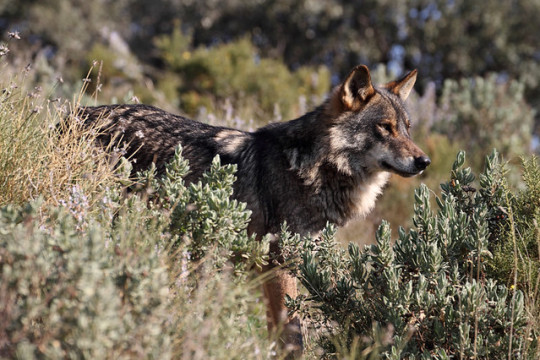#canis lupus signatus
Photo

Iberian Wolf for a $5 Ko-fi supporter
#art#my art#digital#digital art#clip studio#clip studio paint#csp#kofi#ko-fi#kofi commissions#request#commissioned work#doodle#coloured#wolf#iberian wolf#canis lupus#Canis lupus signatus#canis lupus lupus#lazert#lazer-t
119 notes
·
View notes
Text
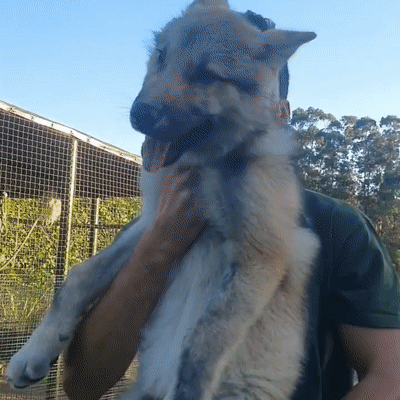



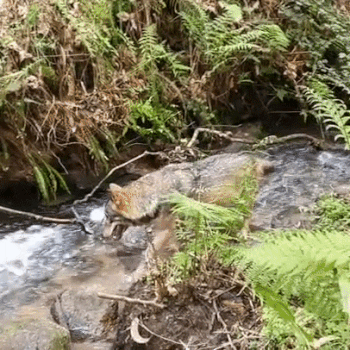


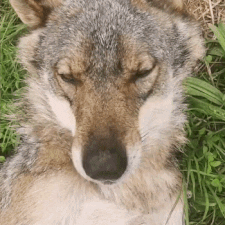
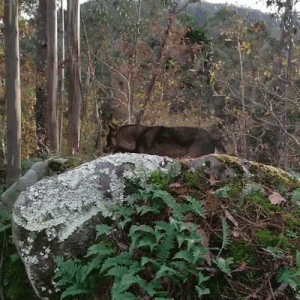

Happy Wolfenoot! even more Iberian wolves~
x x x
x x x
x x x
Banner
I made these gifs-- please link this post if you use!
#wolfenoot#stim stuff#my stim stuff#wolves#iberian wolf#lobo iberico#Lobo ibérico#spanish wolf#take me here#comfort#canis lupus signatus#pups#nature#kin#therian#river#stream
21 notes
·
View notes
Text
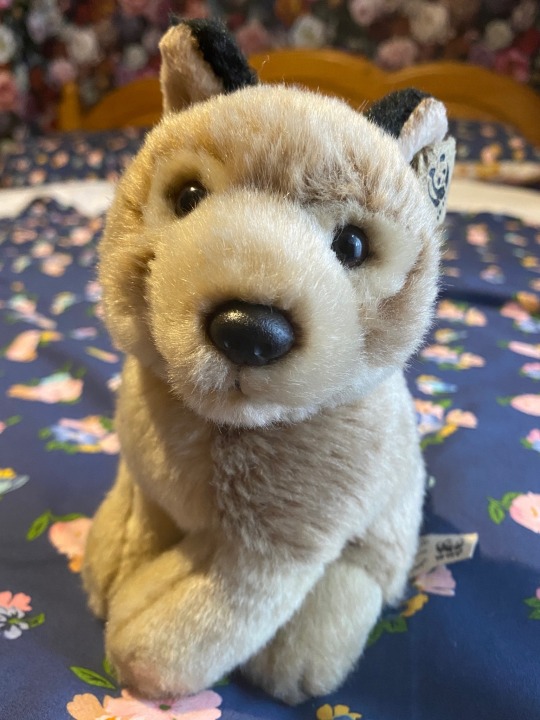

Nacho the Spanish wolf 🐺
I don't think I've posted Nacho before, so I thought I would. Red got her for me around 2007. I don't know if she's actually meant to be an Iberian wolf, as in canis lupus signatus, but I've always called her a Spanish wolf because Red bought her in Spain!
45 notes
·
View notes
Photo

©photography by Walter Jenkel 2014 Iberian Iberian wolf (Canis lupus signatus) WALTER JENKEL @WalterJenkel
40 notes
·
View notes
Note
Hey buddy pal dude guy may I request some content? hytrdfcgh Perhaps some 👉👈 Iberian wolves (Canis lupus signatus) 👉👈
Gotcha! :) Its been posted!
5 notes
·
View notes
Text
Spanien: Wölfe in Andalusien für ausgestorben erklärt
Seit Jahrhunderten streifen Wölfe durch die Gebirgsketten Andalusiens in Südspanien, doch nach Jahren des Rückgangs wurde die Tierart in der Region offiziell für ausgestorben erklärt.
Seit 2003 führt die Regionalregierung eine Zählung der Wolfspopulation (Canis lupus signatus) durch, um die Art zu überwachen und Konflikte mit der lokalen Bevölkerung, insbesondere mit Landwirten, zu…
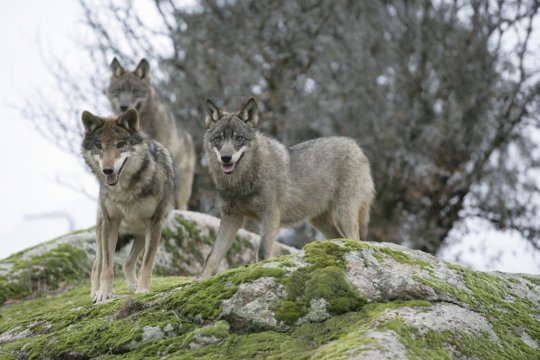
View On WordPress
0 notes
Text
Dois lobos-ibéricos encontrados mortos em Montalegre e Arcos de Valdevez
Dois lobos-ibéricos, animal protegido, foram encontrados mortos nos concelhos de Montalegre e dos Arcos de Valdevez, estando o Ministério Público a investigar, disse à Lusa o Instituto da Conservação da Natureza e das Florestas (ICNF).

Em resposta escrita, o ICNF "confirma que foi informado esta quinta-feira da existência de dois cadáveres de lobo-ibérico na região Norte, um na zona de Montalegre [distrito de Vila Real] e outro na zona dos Arcos de Valdevez [distrito de Viana do Castelo]".
"As circunstâncias em que ocorreram as mortes dos dois animais ainda vão ser apuradas. Não aparentando, contudo, haver qualquer relação entre elas", refere o ICNF.
Fonte da GNR de Vila Real adiantou à Lusa que militares do Serviço de Proteção da Natureza e do Ambiente (SEPNA) de Chaves "recolheram uma carcaça" de lobo-ibérico, pelas 13:00 de ontem, na freguesia de Negrões, concelho de Montalegre, acrescentando que o animal foi transportado para o Instituto Nacional de Veterinária, em Vila do Conde.
Fonte policial revelou à Lusa que "apareceu morto com um tiro" o lobo-ibérico encontrado no concelho de Montalegre.
"Ao ter tido conhecimento dos dois cadáveres, o ICNF ativou de imediato o protocolo estabelecido no âmbito do Sistema de Monitorização de Lobos Mortos, que envolve este instituto, a GNR, o Ministério Público e o Instituto Nacional de Investigação Agrária e Veterinária (INIAV)", explica o ICNF.
Este organismo acrescenta que, no âmbito das suas competências, as equipas do Serviço de Proteção da Natureza e do Ambiente (SEPNA/GNR) e os Vigilantes da Natureza (ICNF) presentes no terreno "desencadearam uma série de procedimentos de investigação, bem como a recolha dos cadáveres, que foram entregues ao INIAV para necropsia".
"Procedeu-se também à elaboração do expediente das ocorrências a entregar no Ministério Público, nas Comarcas de Montalegre e dos Arcos de Valdevez", refere o ICNF.
O Instituto da Conservação da Natureza e das Florestas (ICNF) lembra que em Portugal, "o lobo-ibérico (Canis lupus signatus) é, desde 1989, uma espécie estritamente protegida, quer por via de legislação europeia (Convenção de Berna e Diretiva Habitats), quer por via de legislação nacional (Lei nº90/88, de 27 de abril e Decreto-Lei nº54/2016, de 25 de agosto)".
0 notes
Text
5 Signs Your Dog Loves You, According to Science
New Post has been published on https://petnews2day.com/pet-news/dog-news/5-signs-your-dog-loves-you-according-to-science/
5 Signs Your Dog Loves You, According to Science
Dogs evolved over centuries from ancient wild wolves into loyal partners to humans.
A growing body of research explains how dogs’ distinctive features and skills strengthened the human-canine bond.
Dogs can tell when we’re stressed, when we’re lying, and mirror our behavior, research suggests.
Loading Something is loading.
Thanks for signing up!
Access your favorite topics in a personalized feed while you’re on the go.
download the app
Dogs have long been considered man’s best friend, and for good reason. Over centuries, our four-legged canine companions evolved to become loyal partners.
A growing body of scientific research suggests our furry friends have distinctive features and skills that allow them to perceive, understand, communicate, and show affection toward humans.
From sniffing out when we’re stressed to tearing up when reunited with their owners, here is what science reveals about how humans’ special relationship with dogs developed over time.
Scientists generally agree that dogs evolved from wolves to become the furry, fetch-loving domestic animals they are today roughly 15,000 years ago. But scientists have different theories on how exactly the split from wolves happened.
Dogs wait inside a school bus for their companions to take them to dog school in Santiago, Chile, on September 23, 2022.
Lucas Aguayo Araos/Anadolu Agency via Getty Images
In a study published in the journal Nature in June, geneticists at the Francis Crick Institute analyzed the genomes — or all of the genetic information — of 72 ancient wolves from Europe, Siberia, and North America spanning 100,000 years. Then they compared the wolf DNA, which makes up the genome, to DNA of modern and ancient dogs.
By analyzing the DNA, scientists found early and modern dogs are most similar to gray wolves in Siberia about 13,000 to 23,000 years ago, suggesting domestication took place somewhere in Asia.
“That’s consistent with a wolf population from Central Asia leading to the origin of dogs,” Adam Boyko, a canine geneticist at Cornell University, who was not involved in the study, previously told Insider.
That might not be the end of the story, Boyko added. The findings don’t rule out the possibility that dogs may have been domesticated multiple times, as ancient dogs in the Middle East, Africa, and Southern Europe also show ancestry from wolves in the Middle East.
An Iberian wolf (Canis lupus signatus) exercises at Basondo Animal Refuge, in Kortezubi, Spain, on February 8, 2021.
Vincent West/Reuters
Though their wild ancestors are known for their ferocious nature, dogs evolved to have bigger and more baby-like eyes over time.
In a study published in the Proceedings of the National Academy of Science in 2019, researchers discovered that dogs have muscles around their eyes that help them make puppy dog eyes — that soft squinting look that melts your heart. Wolves don’t have these muscles, which suggests dogs’ adorable expression is an evolutionary trait that helped them get on better with humans.
The author’s Cavalier King Charles Spaniel, Cece.
Paola Rosa-Aquino
Dogs may be able to smell when you’re stressed, according to a study published in Plos One in September. Stress responses trigger physiological changes in humans’ sweat and breath that dogs can detect.
The study involved collecting breath and sweat samples from human participants before and after they completed a “stress-inducing” task. Then dogs trained in identifying odors had to choose between a sample from an unstressed human and a stressed one. The dogs correctly identified the stress sample 94% of the time.
One of the study’s canine participants, Megan, sniffing a human breath and sweat sample.
Courtesy of Kerry Campbell
“This study demonstrates that dogs can discriminate between the breath and sweat taken from humans before and after a stress-inducing task,” the study authors wrote, meaning they were able to identify human odors associated with stress.
Dogs even adopt their owners’ personalities. Research published in the Journal of Research in Personality in 2019 surveyed more than 1,600 dog owners, representing about 50 different breeds. The owners were asked to evaluate their dogs’ personalities and answer questions about their dogs’ behavioral histories. The owners were also asked questions about their own personalities.
Extroverted owners rated their dogs as more active and playful, while owners of more fearful dogs reported more negative emotions.
And while several studies support the notion that dogs and owners often look alike, that’s largely because owners tend to pick dog breeds based on the breed’s resemblance to themselves.
A recovered rescue at the Denver International Airport in 2022.
Denver International Airport
Research suggests dogs are hardwired to communicate with and understand people in unique ways.
“Dogs are very responsive to the way that we talk to them,” John Bradshaw, anthrozoologist and author of “The Animals Among Us,” previously told Insider. “It tricks many owners into thinking they literally understand every word.”
But while they might not understand the words you’re saying, Bradshaw added, dogs are very good at learning to respond to their owner’s tone of voice in specific ways. “It’s almost true that the dog is responding to every word they say,” Bradshaw said.
A study published in the journal Scientific Reports in 2021 found that dogs can understand the difference between humans’ accidental and deliberate actions — or, in other words, when we screw up.
Dogs were fed through the gap before the experimenter started to withhold the reward intentionally or unintentionally.
Josepha Erlacher
The experiment involved 51 dogs who were taught they’d get tasty treats from a human through a gap in a glass partition. Then researchers looked at how dogs reacted when food rewards were withheld from them.
In the study, dogs waited much longer to retrieve the treat when the researcher purposefully withheld it than when the researcher dropped it or couldn’t get it through the glass partition. That finding suggests dogs can distinguish between humans’ intentional actions and unintentional ones.
“Dogs’ communicative skills uniquely position them to fill the niche that they do alongside humans,” Emily Bray, a canine-cognition researcher at the University of Arizona, Tucson, previously told Insider in an email. “Many of the tasks that they perform for us, now and in the past (i.e. herding, hunting, detecting, acting as service dogs), are facilitated by their ability to understand our cues.”
Dog happy to see owner.
Madoka Nakamura
It’s common to see dogs overjoyed to be reunited with their owners.
In a study published in Current Biology in August, researchers recruited 22 dogs and their owners. First, researchers measured tear volume in dogs’ eyes during a normal interaction with their owners, as a baseline. Then, following five to seven hours spent away from their owner, researchers measured tear volume on the surface of the dogs’ eyes each time they were reunited.
After a long period of separation, the dogs’ eyes were brimming with tears when they saw their owner.
“We found that dogs shed tears associated with positive emotions,” Takefumi Kikusui, the study’s lead author and a veterinary researcher at Azabu University in Japan, said in a press release.
This behavior may be related to dogs producing more oxytocin, commonly called the “love hormone,” when they see their owners. Oxytocin also plays a role in emotional bonding in humans.
0 notes
Photo

Lobo Ibérico (Canis lupus signatus) . . 🌟📸 By @inigocosin 🌟 . Support and follow the photographer . Selected by : @soulandfuel . . 🎆Congrats for the feature🎆 . . ▶️Follow & use #wildlifephotographyworld to get featured on our page◀️ . . ▶️Check out Wildlife Photography World Official on Facebook ◀️ . . Image is a copyright of the photographer ©️ . . . . #wildlife #nature #wildlifephotography #naturephotography #wild #naturelovers #photooftheday #birdsofinstagram #travel #love #birdphotographyworld #wildlifephotos #wildlifefriend #wildplanet #wildphoto #wildlifeaddicts #wildlife_shots #wildlifephoto #wildlife_perfection #wildlifeofinstagram #global4nature #wildlife_inspired #animalsofinstagram #wildlifeconservation #wildlifeartist #wildlifephotographyworld https://youtu.be/Fi_RfzakvzM https://www.instagram.com/p/CgJzaTIP2Jm/?igshid=NGJjMDIxMWI=
#wildlifephotographyworld#wildlife#nature#wildlifephotography#naturephotography#wild#naturelovers#photooftheday#birdsofinstagram#travel#love#birdphotographyworld#wildlifephotos#wildlifefriend#wildplanet#wildphoto#wildlifeaddicts#wildlife_shots#wildlifephoto#wildlife_perfection#wildlifeofinstagram#global4nature#wildlife_inspired#animalsofinstagram#wildlifeconservation#wildlifeartist
1 note
·
View note
Photo



Wolves discovered living just outside Rome for first time in more than a century
Hidden cameras captured a pair of mature cubs drinking from a watering hole and loping through the undergrowth of the protected area.
The city's symbol is a she-wolf suckling the infant brothers Romulus and Remus, and now wolves have been spotted outside Rome for the first time in more than a century.
The wolves were photographed by hidden cameras in startling proximity to the city – roaming a nature reserve just outside the busy three-lane ring road that encircles the Italian capital.
The reserve at Castel di Guido is not far from Leonardo da Vinci international airport – the city’s biggest – and is run by LIPU, the Italian League for the Protection of Birds.
Biologists believe there are at least two cubs and two adults living in the reserve. The male adult has been nicknamed Romulus by researchers.
“This is the first time in more than 100 years that wolves have been found living near Rome,” Alessia De Lorenzis, a professor of natural sciences who is monitoring the wolf pack, told The Telegraph. “We’re very pleased that they are back.”
The wolves should pose no threat to livestock because analysis of their excrement had shown that their diet was made up exclusively of wild boar, which roam the countryside in large numbers.
“We think they probably arrived here from the area around Lake Bracciano, north of Rome, where wolves have always existed, even when the species was pushed towards extinction,” said Prof De Lorenzis.
Killing wolves was encouraged in Italy until the 1970s, by which time only 100 or so individuals remained in Italy. But the species was given protected status in 1971 and has since gradually recovered.
It is believed there are now 1,500-2,000 individuals roaming Italy, with strong populations in the Apennines and in the Alps, on the border with France.
The wolves have crossed the border in recent years and are blamed by French farmers and shepherds for killing sheep. The wolves have gradually moved north, into the Massif Central and up through the Jura and Vosges mountains, with claims recently that some are living in the countryside around Paris.
Conservation groups are campaigning for wolves to be reintroduced to Britain, along with brown bears and lynx. Beavers have already been successfully reestablished in some parts of the country.
Source
#wolf#wolves#rome#wildlife#nature#news#italy#trap cameras#wolf pack#romulus#iberian wolf#canis lupus signatus
6K notes
·
View notes
Text
uhhhh dropping a character?? Meet Coda, a spindly and nervous but affectionate and resilient Iberian wolf
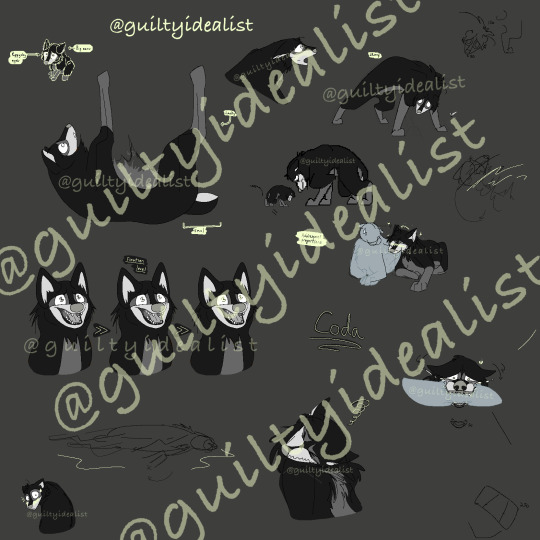

Have now spent 100+ hours on this roughs sheet alone... 😵💫😵💫😵💫
and I'm probably not even finished-
Anyway, I also did some crude plushie edits just as concepts to wrap my head around, because I'm commissioning one with some birthday money! Originals are by cholyknight and CyanFox3

I crave reblogs!! 👉👈👉👈👉👈 I worked really long and hard on these!
I do not consent to reposts, use in machine learning programs, or use in image generators.
#reblog please#I'm begging#I spent a godfucking shagton of time on them#;;#i desire ATTENTION. PRAISE even#guiltyart#guiltyedits#wolves#Iberian wolf#canis lupus signatus#ocs#sona*#they are umh. symbolic#of a specific. aspect? of myself?#getting the plush is part of an endeavor to come to terms with accept understand & attend that part of me#artists on tumblr#digital art#ref sheet#sketch page#personal#i'm really into unrefined stuff like this these days. crude. not ''cleaned up''. raw#can you imagine if i was taking comms for this sort of thing. and i was charging a minimum wage rate#''sure i can scrawl out a sheet of crude sketches for ya for umhhh 1 000 (FUCKING) DOLLARS (+/- 300)''#codapunk#vent art#also i'm gonna go ahead and drop this in some more tags too. since i. i don't know fit the bill more or less anyway?#therian#wolf kin
12 notes
·
View notes
Video
Picture by Jose Manuel Fernandez PiPo
Iberian wolf (canis lupus signatus) with some kind of skin condition.
#wolf#wolves#nature#wildlife#animals#archive#iberain#iberian wolf#iberian wolves#canis lupus signatus#skin condition#condition#special#markings#fur#skin#nose#snout#coat
1K notes
·
View notes
Photo

Canis Lupus Signatus by Xenia Blanco.
#wolves#canis lupus signatus#wolf#family#pack of wolves#secrets#wild animals#wildlife#flickr#europe#nature photography#photooftheday#amazing#love#friends#cuddle#hello#summer#landscape#pics#flowers
613 notes
·
View notes
Text
Lobo Iberico - Iberian Wolf (Canis lupus signatus)

from Flickr https://flic.kr/p/2mEYgwZ
via IFTTT
3 notes
·
View notes

